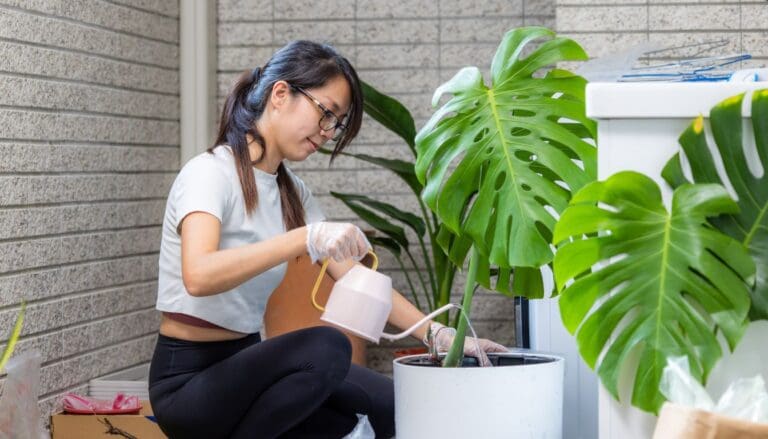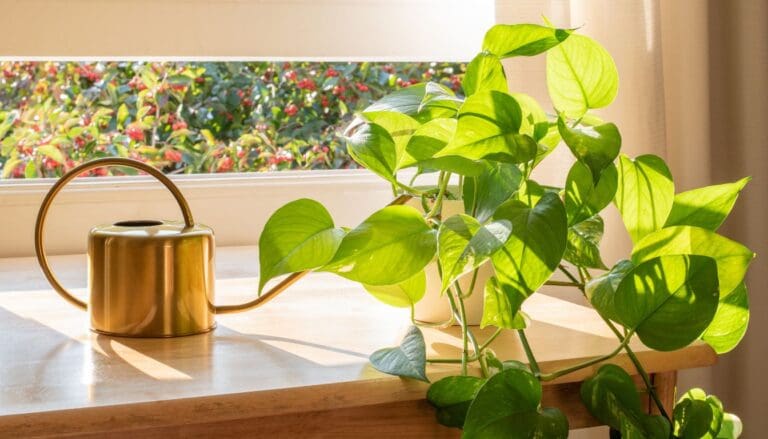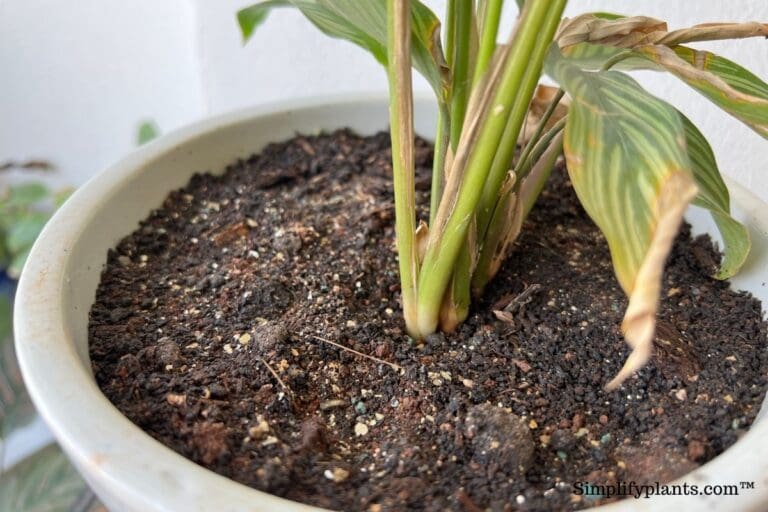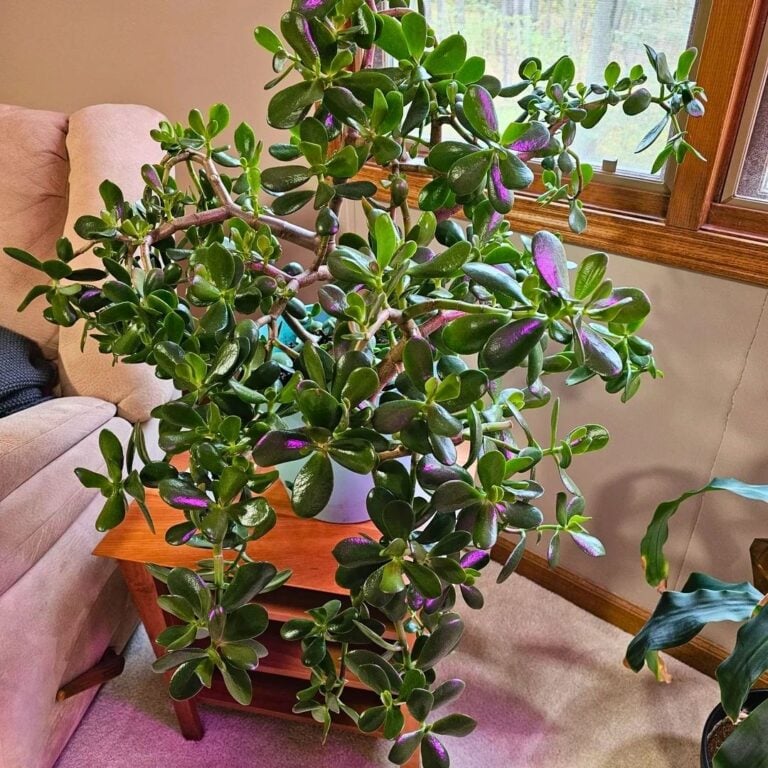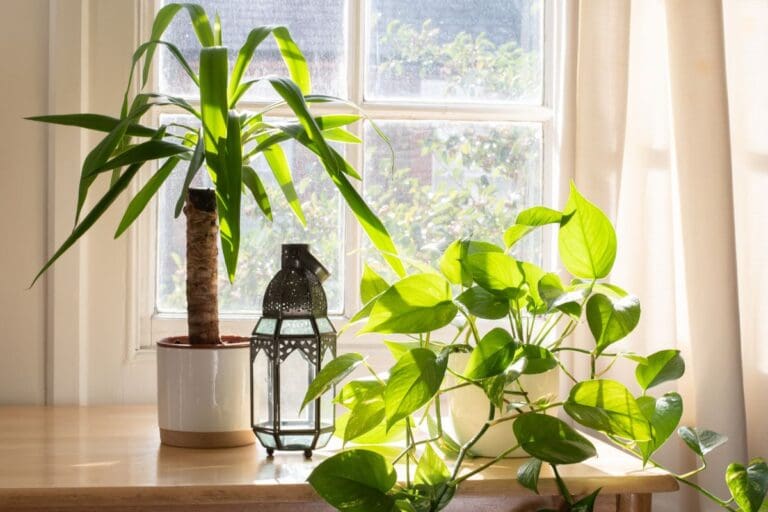Is Dog Poop Good Fertilizer For Trees?
Many plant owners, who have pets, wonder if they can utilize their dogs’ feces to fertilize their plants because dog poop leaves a huge problem due to its slow decomposition process. If you wish to reuse this poop to fertilize your plants, it will help reduce the poop, but some caution is involved.
Dog poop can be used as a fertilizer, but it cannot be used directly for your trees as it contains pathogens that can lead to pests and diseases. However, you can make compost out of it by mixing it with grass clipping, kitchen waste, and sawdust to make a balanced fertilizer for your trees.
In this article, I will tell you everything you need to know about whether dog poop is a good fertilizer, the various risks, and the correct way to recycle poop to feed your plants.

Please note: Simplify Plants is reader-supported. Some links in the post are affiliate links and I get a commission from purchases made through links in the post.
Can dog poop work as fertilizer?
You have heard of and most probably used cow dung manure to feed your plants.
So what makes it great manure but dog poop a toxic one?
Cows consume leafy veggies and are herbivores.
Thus, their poop decomposes quickly and is rich in multiple fibers and macro and micronutrients, which are excellent for plants.
The diet of dogs, on the other hand, consist heavily of meats, so the poop needs to be decomposed very finely before you can use it, as they contain parasites and pathogens which can pass on to humans and make them sick.
You can use the poop of your dog as fertilizer after composting it along with other organic elements like dried leave, twigs, branches, etc.
The temperature in the composting process should be at least 60°C or between 120-140°F so that all the germs and pathogens die in the heat.
Since dog poop is biodegradable, it will decompose, but it takes time.
It naturally takes about six months to a year to decompose completely.
Once the composting procedure is over, the dog poop can be used as a fertilizer for the plants.
Composting neutralizes the acidic elements and makes it fit for plants.
However, it is advisable not to use it for vegetable plants and edibles as that might harm the plants and make you sick if consumed.
Why should you not use fresh dog poop as fertilizer?
Fresh dog poop is highly toxic and should never be used directly on your plants as fertilizer.
We will discuss the different reasons below:
1. It is extremely acidic
Cow dung manure, universally used as a fertilizer to feed plants, is high in multiple nutrients as they consume leafy and organic materials which help the plants.
Dogs consume mainly meaty food, which is high in protein, so when they excrete, the poop becomes rich in acid as the proteins break down into acid, and it can be highly toxic for plants if they are not composted.
2. It does not break down quickly.
The poop of dogs can take years to break down if they are not composted rightly.
Dogs mostly consume meat and very few vegetables, fruits, and grains.
This is why their poop does not decompose early.
For dogs that eat a lot of healthy greens and fruits, and grains, their poop decomposes in around nine weeks.
3. Parasites and bacteria content
The poop of the dogs contains bacteria in their body.
One gram of poop can contain 23 million bacteria, so putting that directly in the plant might not be safe.
The dog poop may also contain parasites like roundworms, hookworms, parvovirus, and trichinosis, which can pass on to humans and infect them if not composted well.
How to compost dog poop?

Dog poop takes a long time to decompose naturally over the ground.
If left like that, it might take about a year to do that.
Hence you can use some ways to compost the dog poop by regulating the factors like heat, moisture, etc., that mainly help the decomposition process.
Let us discuss the process in detail.
1. Gather the materials
You need to get a few materials to begin the process of composting.
Two categories of materials are added to compost bins to make the organic elements decompose properly: nitrogen-rich and carbon-rich materials.
- Nitrogen rich materials
- Vegetable wastes
- Commercial fertilizers
- Dog poop
- Fish scraps
- Animal manure from cows, pigs, chickens, and herbivorous animals,
- Green grass clippings
- Carbon-rich materials
- Fallen leaves increase the decomposition process.
- Newspaper shredding
- Sawdust makes composite manure.
- Chopped straw
- Other materials
- A bin to compost the pile, preferably with a lid.
- A fork and a shovel helped to mix and turn the compost for even decomposition.
- A moisture meter to monitor the amount of moisture in the compost
- A thermometer to keep the temperature in check
2. Choose a sunny location
Begin the process by choosing a sunny and dry spot to place your compost bin.
The compost needs full sunlight as much as possible the location should not get any shade and must have full sunlight.
Ensure that the bin is deep and wide enough so that the pile does not overflow and is safe from children or pets.
3. Add poop and carbon
Start by layering the materials with green and brown.
Grass clippings and dog poop should be layered with paper and sawdust, watered, left to rot and break down, and then turned regularly.
Now begin by adding the materials, one shovel of carbon in the form of sawdust or dried corn stalks and grass clippings to two shovels of dog poop.
When the mixture reaches two-three feet, add water until it is moist and mix and turn it well.
Cover the mixture so that the compost can cook well.
4. Monitor the temperature
When the temperature rises, you need to turn the compost again when it drops again.
This process continues for months until the compost is ready to be added to the plants.
Keep adding organic materials to the bin over time, and keep it covered all the time.
Check the temperature of the compost pile from time to time.
Whenever you see the temperature declining, you must turn the compost.
5. Age the compost
Leave the compost to age for eight months to a year.
The longer it gets, the better quality it will reach.
The compost will fully decompose when you notice the temperatures are not heating up anymore, even after turning and mixing it.
It will be dark and crumbly in texture and will have moisture in it.
It will also have an earthy smell as opposed to the compost that is not ready and will still smell of rot and poop.
The high temperature will break down the elements, kill all the pathogens, and make it safe for the plants.
Some safety notes
Here are some safety notes you should take care of:
- Do not handle the dog poop with bare hands, and wear gloves at all times. Wash your hands thoroughly after handling the compost.
- Ensure that your doggy stays healthy and eats healthy.
- Do not use the poop of dogs you do not know or are infested with diseases.
- Do not use dog poo in edible vegetable or fruit plants.
How long does it take to compost dog poop?

According to the UF IFAS Extension, you must compost the poop of your dog for at least 8 weeks.
This time varies according to the amount of poop in a pile.
In the composting procedure, you need to turn the mixture each week to increase the pile’s temperature.
Researchers also recommend covering the bin with black plastic to ensure high temperature and moisture lock inside the pile and do not escape.
How to add compost to plants?
Spread two to three inches of compost around your plants, mix it with the top layer of the soil, and water the soil evenly so that the nutrients of the compost reach the plant.
Final words
Although dog poop can be excessively smelly, if you compost it correctly, it can be reused to benefit your plants.
Composting dog poop is easy, does not cost anything, and helps to reduce waste in the environment. The composting process takes time, but you can get rich and good fertilizer from it.
You should use dog poop carefully, as using it excessively or incorrectly can harm plants and trees. And always wear gloves while dealing with dog poop.
Recommended Garden Supplies
| Product Image | Our Recommended Gardening Supplies | Check Offers! |
|---|---|---|
Top Top
Top
Top
Top
Top
Top
Top
Top | rePotme Houseplant and Tropical Classic Potting Soil Mix | Check Offer On Amazon |
 Top
Top
Top
Top
Top
Top
Top
Top | Espoma Organic Indoor Plant Food | Check Offer On Amazon |
 Top
Top
Top
Top
Top
Top
Top
Top | GooingTop LED Grow Light 6000K Full Spectrum Clip Plant Growing Lamp | Check Offer On Amazon |
 Top
Top
Top
Top
Top
Top
Top
Top | Soil Moisture Meter | Check Offer On Amazon |
 Top
Top
Top
Top
Top
Top
Top
Top | Govee Hygrometer Thermometer, Bluetooth Enabled! | Check Offer On Amazon |
 Top
Top | LEVOIT Humidifiers for Large Room(Best For Plants) | Check Offer On Amazon |
 Top
Top
Top
Top
Top
Top
Top
Top | Upgraded DIY Automatic Drip Irrigation Kit, 15 Potted Houseplants Support | Check Offer On Amazon |
 Top
Top
Top
Top
Top
Top
Top
Top | Stainless Steel Heavy Duty Gardening Tool Set | Check Offer On Amazon |
 Top
Top
Top
Top
Top
Top
Top
Top | Bonide Insecticidal Soap | Check Offer On Amazon |
 Top
Top
Top
Top
Top
Top
Top
Top | Bonide 32 oz Spray Neem Oil for Organic Gardening | Check Offer On Amazon |
 Top
Top
Top
Top
Top
Top
Top
Top | Garden Safe Fungicide | Check Offer On Amazon |


